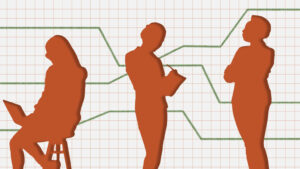Women in Leadership Face Ageism at Every Age

When a university vice president had an opening for a controller sitting just beneath her in the hierarchy, board members told her to seek an “older man” to complement her. Since she began the vice president role at age 37, board members routinely criticized her age, calling her diminishing pet names, like “kiddo” and “young lady.” But being older wouldn’t necessarily have made a difference, as another woman explained: “I am at the age when I should be getting the higher-level jobs; people in my profession now want to give the jobs to the 30- and younger 40-year-olds with the ‘fresh, new ideas’ as opposed to going with the person with experience.”
Originally, ageism was understood to be prejudice, stereotypes, and discriminatory behavior targeted at older employees. Driven by the misperception that performance worsens and capacity decreases as people age, older employees are expected to just quietly leave so that younger talent can take the reins. With an increasingly diverse and multigenerational workforce, age bias now occurs across the career life cycle. “Youngism” refers to ageism toward younger adults and is fueled by the conflation of age with maturity and the misperception that tenure is required for competency.
However, research has only just begun to investigate how age is used to justify bias and discrimination specifically against women. Gendered ageism sits at the intersection of age and gender bias and is a double whammy where there is “no right age” for professional women.
In our recent open-ended survey research of 913 women leaders from four United States industries (higher education, faith-based nonprofits, law, and health care), we discovered that many women suffered from this “never-right” age bias. Conceptions of young, middle, and old age are often based on perceptions and vary between workplaces and contexts. When interpreting our results, we consider “young” to be under 40, middle age to be between 40 and 60, and older women to be over 60.